anti-capitalist
net worth of $30 million
okay buddy
It's only fine until those sulfates react with water vapor in the atmosphere to form sulphuric acid. That stuff rains back down and contributes to ocean acidification which is causing serious harm to all sorts of marine ecosystems.
"And then it got worse."
Wait, you guys are getting President's Day off work??
you managed to piss off a huge chunk of your paper's subscriber base without winning over anyone from the other side
This never had anything to do with winning over MAGA voters. It was only ever about Bezos fearing retaliation from a future Trump administration if he manages to win a second term.
There's a reason people like Musk are bending over backwards to suck Trump's dick: They've all seen what happened to oligarchs in other countries who didn't bend the knee when a new dictator came to power. Putin is probably the best and most relevant recent example, but the "Saudi Arabian purge" is another, and similar things have been happening all over the world this century.
Account created 13 hours ago
Bingo
32 posts a day is a LOT.
Honestly, that's not even that impressive... It's only 4 posts per hour over a 8 hour work day, which is completely achievable if Internet trolling is your hobby of choice.
What's really impressive is the number of comments. I won't speculate on Monk's motives (out of fear of running afoul of this community's rules) except to say that they seem extremely motivated to argue with anyone and everyone who posts a disagreeing comment. Their tactic is to bicker with any dissenting voices (without actually engaging with their arguments) to the point of exhaustion so that no one will bother engaging anymore — a very specific strategy I have to imagine is designed to shift the Overton window a particular way.
Fortunately, their efforts seem to have been mostly ineffective given the number of people around here who continue to call out their BS. So keep fighting the good fight, I guess!
Past a certain age, cats tend to develop that specific physique as they lose muscle tone — usually around 17 or 18 years old. By that point they probably also have arthritis making grooming more difficult/painful, which can contribute to the "mangy" look of their fur. Of course, age itself also affects the fur in various ways including thinning and changes in luster/texture. It's also very common for senior cats to have some sort of kidney disease, which can lead to dehydration that further affects the fur.
To be fair, that is a pretty funny prank.
"Oh, you wanted comedy? Here, have this harrowing tale about genocide and the great depths of human suffering instead!"
But how can set b contain all of the horses if they're already in set a???
You gotta admit, no one is better at projecting than Trump!
You know who doesn't hate Jill Stein? David fucking Duke.
Maybe I should have read the article
In their defense, the article is extremely obnoxious to read (at least on mobile). We shouldn't have to scroll past dozens of huge images and 'interactive' graphics just to get to the actual text... and that's with an ad blocker installed — I imagine it's even worse without one.
Lots of people are voting third party.
[citation needed]
Wake up at 5:30am
Counter offer: go to hell
Looks like plenty of people disagree with you
Those are your words to another commenter, whom I think we can very safely assume is also not running for president. So why bring it up at all if it doesn't matter?
What does that have to do with anything?
A handful of Republicans in the U.S. House of Representatives on Tuesday ousted Republican Speaker Kevin McCarthy, as party infighting plunged Congress into further chaos just days after it narrowly averted a government shutdown.

A new investigation with NASA’s James Webb Space Telescope into K2-18 b, an exoplanet 8.6 times as massive as Earth, has revealed the presence of carbon-bearing molecules including methane and carbon dioxide.

A new investigation with NASA’s James Webb Space Telescope into K2-18 b, an exoplanet 8.6 times as massive as Earth, has revealed the presence of carbon-bearing molecules including methane and carbon dioxide. Webb’s discovery adds to recent studies suggesting that K2-18 b could be a Hycean exoplanet, one which has the potential to possess a hydrogen-rich atmosphere and a water ocean-covered surface.
Neptune-sized planet has a density similar to pure silver.

> Scientists have been working on models of planet formation since before we knew exoplanets existed. Originally guided by the properties of the planets in our Solar System, these models turned out to be remarkably good at also accounting for exoplanets without an equivalent in our Solar System, like super Earths and hot Neptunes. Add in the ability of planets to move around thanks to gravitational interactions, and the properties of exoplanets could usually be accounted for.
> Today, a large international team of researchers is announcing the discovery of something our models can't explain. It's roughly Neptune's size but four times more massive. Its density—well above that of iron—is compatible with either the entire planet being almost entirely solid or it having an ocean deep enough to drown entire planets. While the people who discovered it offer a couple of theories for its formation, neither is especially likely.
In their jiggles and shakes, red giant stars encode a record of the magnetic fields near their cores.
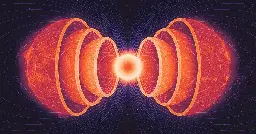
In their jiggles and shakes, red giant stars encode a record of the magnetic fields near their cores.
A new NASA study offers an explanation of how quakes could be the source of the mysteriously smooth terrain on moons circling Jupiter and Saturn.

A new NASA study offers an explanation of how quakes could be the source of the mysteriously smooth terrain on moons circling Jupiter and Saturn.
Astronomers have uncovered a link between Neptune's shifting cloud abundance and the 11-year solar cycle, in which the waxing and waning of the Sun's entangled magnetic fields drives solar activity.

> Astronomers have uncovered a link between Neptune's shifting cloud abundance and the 11-year solar cycle, in which the waxing and waning of the Sun's entangled magnetic fields drives solar activity.
Giant black holes were supposed to be bit players in the early cosmic story. But recent James Webb Space Telescope observations are finding an unexpected abundance of the beasts.

Giant black holes were supposed to be bit players in the early cosmic story. But recent James Webb Space Telescope observations are finding an unexpected abundance of the beasts.
A strange history has produced a helium-rich star with kilogauss magnetic fields.

> Magnetars are some of the most extreme objects we know about, with magnetic fields so strong that chemistry becomes impossible in their vicinity. They're neutron stars with a superfluid interior that includes charged particles, so it's easy to understand how a magnetic dynamo is maintained to support that magnetic field. But it's a little harder to fully understand what starts the dynamo off in the first place.
> The leading idea, which benefits from its simplicity, is that the magnetar inherits its magnetic field from the star that exploded in a supernova to create it. The original magnetic field, when crushed down to match the tiny size of the resulting neutron star, would provide a massive kick to start the magnetar off. There's just one problem with this idea: we haven't spotted any of the highly magnetized precursor stars that this hypothesis requires.
>It turns out that we have been observing one for years. It just looked like something completely different, and it took a more careful analysis, published today in Science, to understand what we've been observing.
New observations of a faraway rocky world that might have its own magnetic field could help astronomers understand the seemingly haphazard magnetic fields swaddling our solar system’s planets.

> New observations of a faraway rocky world that might have its own magnetic field could help astronomers understand the seemingly haphazard magnetic fields swaddling our solar system’s planets.
Small bits of material in the asteroid contain isotopes made in specific stars.

When JAXA’s Hayabusa-1 spacecraft delivered samples from asteroid Ryugu to Earth in late 2020, anticipation was high. What could the space rock possibly be waiting to tell us?
Asteroids are time capsules of the Solar System, containing material from early in its history. As a 2021 study found, the Ryugu samples contained carbon, nitrogen, and oxygen, all necessary ingredients for life, and a 2022 study discovered evidence of water (and possibly a subsurface lake) that had long since dried up. Ryugu and its parent body were also revealed to carry some of the most ancient rocks in the Solar System. However, the pieces of this asteroid still had more to say.
It turned out that two of the Ryugu samples each had a shard of something that visually stood out. Researchers discovered they were seeing fragments, or clasts, of rock with a chemical composition that differed from the rest of Ryugu. These clasts were higher in sulfur and iron, but lower in oxygen, magnesium, and silicon. That meant they could not have possibly formed with Ryugu, so they had to have been acquired through a later impact; but the asteroid still had more to say.
By measuring the universe’s emptiest spaces, scientists can study how matter clumps together and how fast it flies apart.
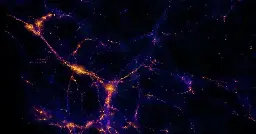
By measuring the universe’s emptiest spaces, scientists can study how matter clumps together and how fast it flies apart.
"NASA is looking to go to Mars with this system."
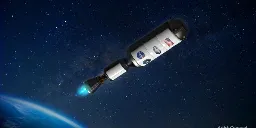
>Four years from now, if all goes well, a nuclear-powered rocket engine will launch into space for the first time. The rocket itself will be conventional, but the payload boosted into orbit will be a different matter.
>NASA announced Wednesday that it is partnering with the US Department of Defense to launch a nuclear-powered rocket engine into space as early as 2027. The US space agency will invest about $300 million in the project to develop a next-generation propulsion system for in-space transportation.
Even if one robot fails, the rest of the team can offset its loss.
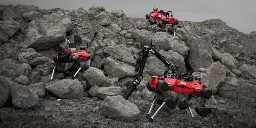
While rovers have made incredible discoveries, their wheels can hold them back, and erratic terrain can mean damage. There is no replacing something like Perseverance, but sometimes rovers could use a leg up, and they could get that from a small swarm of four-legged robots.
We have no explanations for this sort of slow repeat.
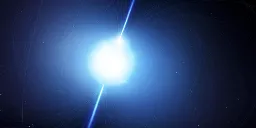
> On Wednesday, researchers announced the discovery of a new astronomical enigma. The new object, GPM J1839–10, behaves a bit like a pulsar, sending out regular bursts of radio energy. But the physics that drives pulsars means that they'd stop emitting if they slowed down too much, and almost every pulsar we know of blinks at least once per minute.
> GPM J1839–10 takes 22 minutes between pulses. We have no idea what kind of physics or what kind of objects can power that.
Ultracold gases in the lab could help scientists better understand the universe.

[...]to accurately interpret some of the neutron stars’ signals, researchers must first understand what goes on inside them. They have their hunches, but experimenting directly on a neutron star is out of the question. So scientists need another way to test their theories. The behavior of matter in such a superdense object is so complicated that even computer simulations aren’t up to the task. But researchers think they may have found a solution: an earthly analog.
Though young neutron stars can have temperatures in the millions of degrees in their interior, by one important energetic measure neutrons are considered “cold.” Physicists think that is a characteristic they can exploit to study the inner workings of neutron stars. Instead of looking to the sky, researchers are peering into clouds of ultracold atoms created in laboratories here on Earth. And that might help them finally answer some longs
One more big test remains for Varda's first-of-its-kind "space factory."
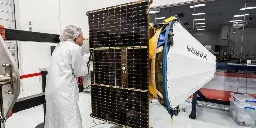
The co-founder of California-based startup Varda Space Industries says his company’s first space mission—a miniature lab that has grown crystals of the drug ritonavir in orbit—is on track to end in the coming weeks with a first-of-its-kind re-entry and landing in Utah.
Varda’s spacecraft launched June 12 as part of a rideshare mission on a SpaceX Falcon 9 rocket, then completed several weeks of checkouts before starting a 27-hour drug-manufacturing experiment last week. When ground controllers gave the go-ahead, the mini-lab began growing crystals of ritonavir, a drug commonly used to treat HIV.
The experiment’s 27-hour run was completed on June 30, and data downlinked from the spacecraft showed everything went well.
Researchers have discovered the most distant active supermassive black hole to date with the James Webb Space Telescope. The galaxy, CEERS 1019, existed just over 570 million years after the big bang, and its black hole is less massive than any other yet identified in the early universe.
Researchers have discovered the most distant active supermassive black hole to date with the James Webb Space Telescope. The galaxy, CEERS 1019, existed just over 570 million years after the big bang, and its black hole is less massive than any other yet identified in the early universe. Not only that, they’ve easily “shaken out” two more black holes that are also on the smaller side, and existed 1 and 1.1 billion years after the big bang. Webb also identified eleven galaxies that existed when the universe was 470 to 675 million years old. The evidence was provided by Webb’s Cosmic Evolution Early Release Science (CEERS) Survey, led by Steven Finkelstein of the University of Texas at Austin. The program combines Webb’s highly detailed near- and mid-infrared images and data known as spectra, all of which were used to make these discoveries.
CEERS 1019 is not only notable for how long ago it existed, but also how relatively little its black hole weighs. This black hole clocks in at about 9 million solar masses, far less than other black holes that also existed in the early universe and were detected by other telescopes. Those behemoths typically contain more than 1 billion times the mass of the Sun – and they are easier to detect because they are much brighter. (They are actively “eating” matter, which lights up as it swirls toward the black hole.) The black hole within CEERS 1019 is more similar to the black hole at the center of our Milky Way galaxy, which is 4.6 million times the mass of the Sun. This black hole is also not as bright as the more massive behemoths previously detected. Though smaller, this black hole existed so much earlier that it is still difficult to explain how it formed so soon after the universe began. Researchers have long known that smaller black holes must have existed earlier in the universe, but it wasn’t until Webb began observing that they were able to make definitive detections. (CEERS 1019 may only hold this record for a few weeks – claims about other, more distant black holes identified by Webb are currently being carefully reviewed by the astronomical community.)
Webb’s data is practically overflowing with precise information that makes these confirmations so easy to pull out of the data. “Looking at this distant object with this telescope is a lot like looking at data from black holes that exist in galaxies near our own,” said Rebecca Larson of the University of Texas at Austin, who led this discovery. “There are so many spectral lines to analyze!” Not only could the team untangle which emissions in the spectrum are from the black hole and which are from its host galaxy, they could also pinpoint how much gas the black hole is ingesting and determine its galaxy’s star-formation rate.
The team found this galaxy is ingesting as much gas as it can while also churning out new stars. They turned to the images to explore why that might be. Visually, CEERS 1019 appears as three bright clumps, not a single circular disk. “We’re not used to seeing so much structure in images at these distances,” said CEERS team member Jeyhan Kartaltepe of the Rochester Institute of Technology in New York. “A galaxy merger could be partly responsible for fueling the activity in this galaxy’s black hole, and that could also lead to increased star formation.”
The CEERS Survey is expansive, and there is a lot more to explore. Team member Dale Kocevski of Colby College in Waterville, Maine, and the team quickly spotted another pair of small black holes in the data. The first, within galaxy CEERS 2782, was easiest to pick out. There isn’t any dust obscuring Webb’s view of it, so researchers could immediately determine when its black hole existed in the history of the universe – only 1.1 billion years after the big bang. The second black hole, in galaxy CEERS 746, existed slightly earlier, 1 billion years after the big bang. Its bright accretion disk, a ring made up of gas and dust that encircles its supermassive black hole, is still partially clouded by dust. “The central black hole is visible, but the presence of dust suggests it might lie within a galaxy that is also furiously pumping out stars,” Kocevski explained.
Like the one in CEERS 1019, these two black holes are also “light weights” – at least when compared to previously known supermassive black holes at these distances. They are only about 10 million times the mass of the Sun. “Researchers have long known that there must be lower mass black holes in the early universe. Webb is the first observatory that can capture them so clearly,” Kocevski added. “Now we think that lower mass black holes might be all over the place, waiting to be discovered.” Before Webb, all three black holes were too faint to be detected. “With other telescopes, these targets look like ordinary star-forming galaxies, not active supermassive black holes,” Finkelstein added.
Webb’s sensitive spectra also allowed these researchers to measure precise distances to, and therefore the ages of, galaxies in the early universe. Team members Pablo Arrabal Haro of NSF's NOIRLab and Seiji Fujimoto of the University of Texas at Austin identified 11 galaxies that existed 470 to 675 million years after the big bang. Not only are they extremely distant, the fact that so many bright galaxies were detected is notable. Researchers theorized that Webb would detect fewer galaxies than are being found at these distances. “I am overwhelmed by the amount of highly detailed spectra of remote galaxies Webb returned,” Arrabal Haro said. “These data are absolutely incredible.”
These galaxies are rapidly forming stars, but are not yet as chemically enriched as galaxies that are much closer to home. “Webb was the first to detect some of these galaxies,” explained Fujimoto. “This set, along with other distant galaxies we may identify in the future, might change our understanding of star formation and galaxy evolution throughout cosmic history,” he added.
These are only the first groundbreaking findings from the CEERS survey. “Until now, research about objects in the early universe was largely theoretical,” Finkelstein said. “With Webb, not only can we see black holes and galaxies at extreme distances, we can now start to accurately measure them. That’s the tremendous power of this telescope.” In the future, it’s possible Webb’s data may also be used to explain how early black holes formed, revising researchers’ models of how black holes grew and evolved in the first several hundred million years of the universe’s history.
Organizations using unpatched SolarView products face potentially serious consequences.
Hundreds of Internet-exposed devices inside solar farms remain unpatched against a critical and actively exploited vulnerability that makes it easy for remote attackers to disrupt operations or gain a foothold inside the facilities.
The devices, sold by Osaka, Japan-based Contec under the brand name SolarView, help people inside solar facilities monitor the amount of power they generate, store, and distribute. Contec says that roughly 30,000 power stations have introduced the devices, which come in various packages based on the size of the operation and the type of equipment it uses.
Searches on Shodan indicate that more than 600 of them are reachable on the open Internet. As problematic as that configuration is, researchers from security firm VulnCheck said Wednesday, more than two-thirds of them have yet to install an update that patches CVE-2022-29303, the tracking designation for a vulnerability with a severity rating of 9.8 out of 10. The flaw stems from the failure to neutralize potentially malicious elements included in user-supplied input, leading to remote attacks that execute malicious commands.
Security firm Palo Alto Networks said last month the flaw was under active exploit by an operator of Mirai, an open source botnet consisting of routers and other so-called Internet of Things devices. The compromise of these devices could cause facilities that use them to lose visibility into their operations, which could result in serious consequences depending on where the vulnerable devices are used.
“The fact that a number of these systems are Internet facing and that the public exploits have been available long enough to get rolled into a Mirai-variant is not a good situation,” VulnCheck researcher Jacob Baines wrote. “As always, organizations should be mindful of which systems appear in their public IP space and track public exploits for systems that they rely on.”
Baines said that the same devices vulnerable to CVE-2022-29303 were also vulnerable to CVE-2023-23333, a newer command-injection vulnerability that also has a severity rating of 9.8. Although there are no known reports of it being actively exploited, exploit code has been publicly available since February.
Incorrect descriptions for both vulnerabilities are one factor involved in the patch failures, Baines said. Both vulnerabilities indicate that SolarView versions 8.00 and 8.10 are patched against CVE-2022-29303 and CVE-2023-293333. In fact, the researcher said, only 8.10 is patched against the threats.
Palo Alto Networks said the exploit activity for CVE-2022-29303 is part of a broad campaign that exploited 22 vulnerabilities in a range of IoT devices in an attempt to spread a Marai variant. The attacks started in March and attempted to use the exploits to install a shell interface that allows devices to be controlled remotely. Once exploited, a device downloads and executes the bot clients that are written for various Linux architectures.
There are indications that the vulnerability was possibly being targeted even earlier. Exploit code has been available since May 2022. This video from the same month shows an attacker searching Shodan for a vulnerable SolarView system and then using the exploit against it.
While there are no indications that attackers are actively exploiting CVE-2023-23333, there are multiple exploits on GitHub.
There’s no guidance on the Contec website about either vulnerability and company representatives didn’t immediately respond to emailed questions. Any organization using one of the affected devices should update as soon as possible. Organizations should also check to see if their devices are exposed to the Internet and, if so, change their configurations to ensure the devices are reachable only on internal networks.
NASA’s Parker Solar Probe accomplished a milestone on June 27, 2023 – its 16th orbit of the Sun. This included a close approach to the Sun (known as perihelion) on June 22, 2023, where the spacecraft came within 5.3 million miles of the solar surface while moving at 364,610 miles per hour. The spacecraft emerged from the solar flyby healthy and operating normally.
On Aug. 21, 2023, Parker Solar Probe will swing past Venus for its sixth flyby of the planet. To prepare for a smooth course, the mission team at the Johns Hopkins Applied Physics Laboratory (APL) applied a small trajectory correction maneuver on June 7, 2023, the first course correction since March 2022. This flyby will be the sixth of seven planned flybys of Venus during Parker’s primary mission. Parker uses Venus’ gravity to tighten its orbit around the Sun and set up a future perihelion at just 4.5 million miles from the Sun’s surface. As the Sun becomes increasingly active, this perihelion will be especially important to learning more about heliophysics.